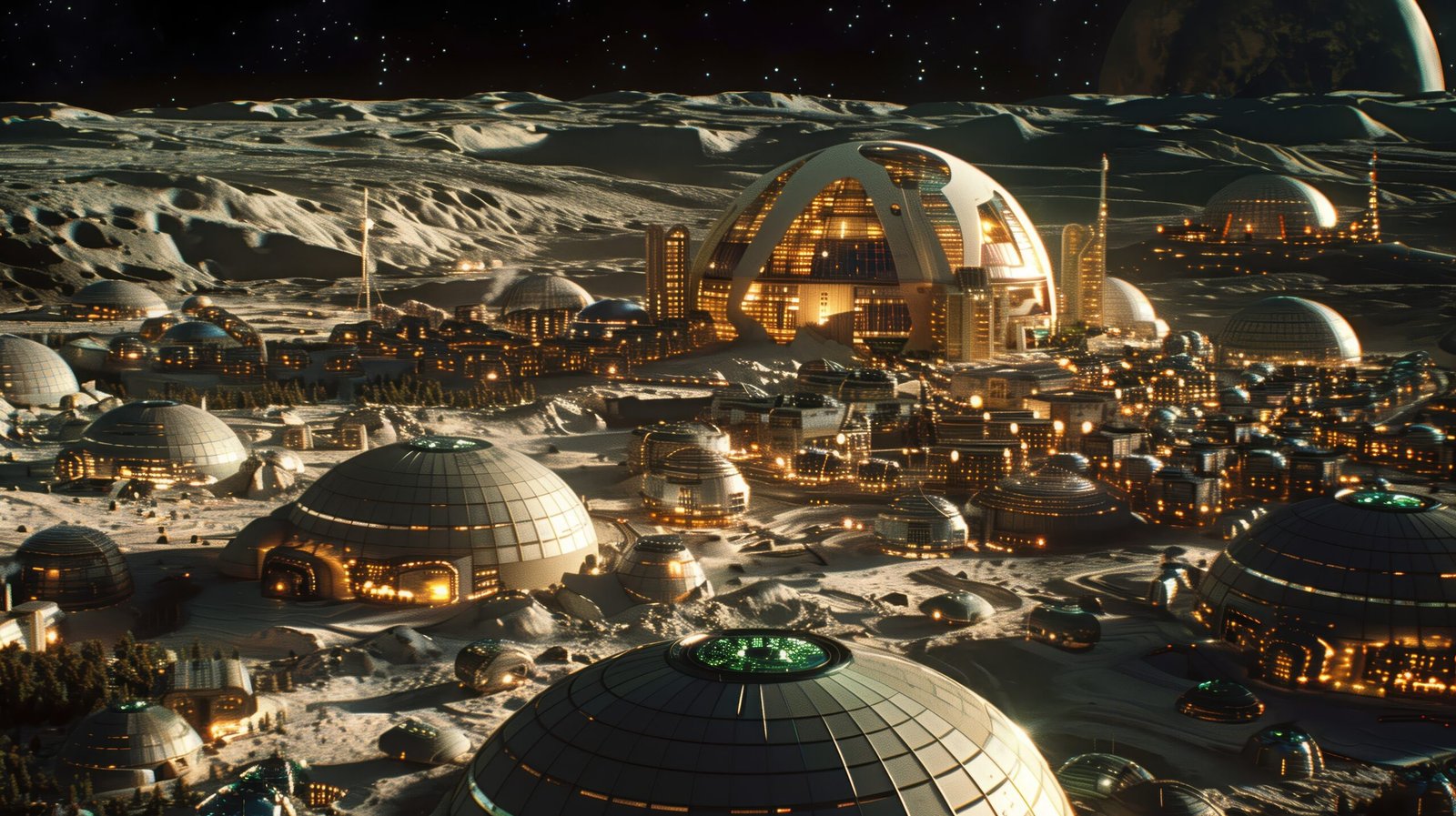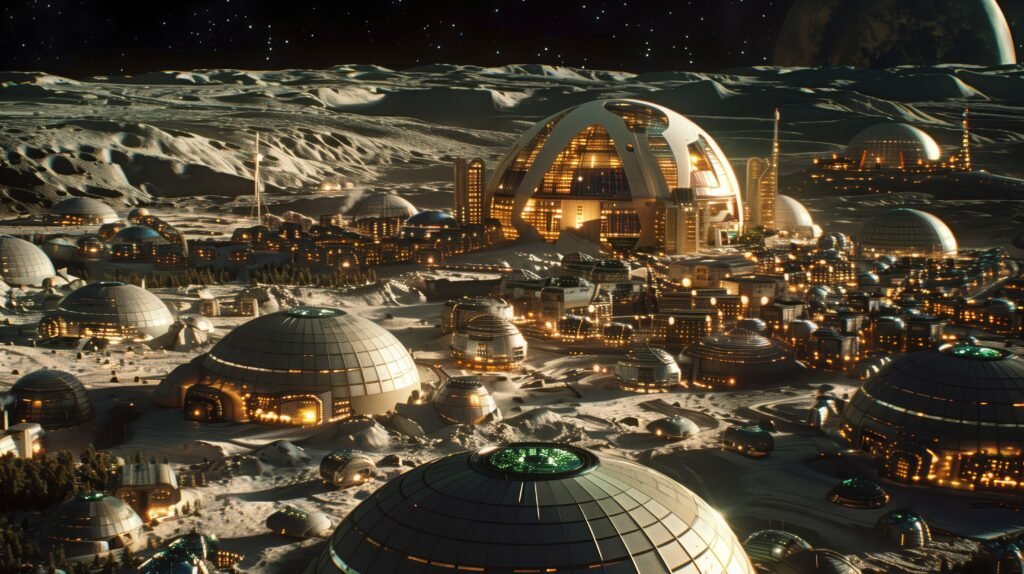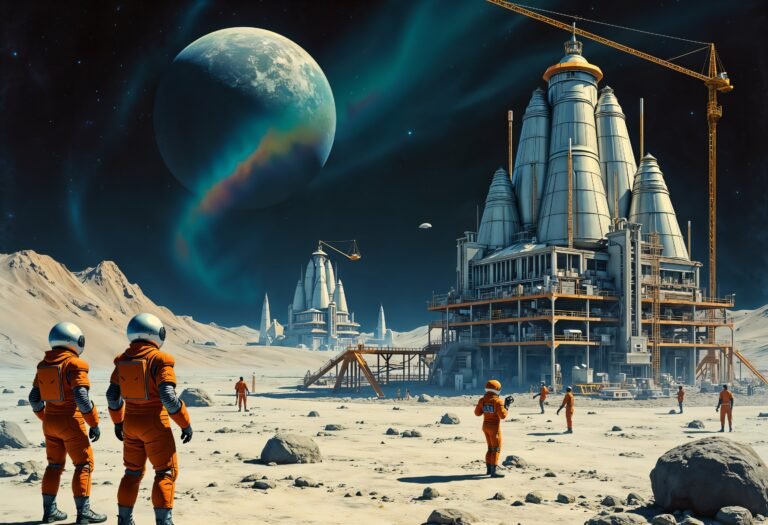Space Colonization: Adding $10 Trillion to World Economy

Space colonization — establishing permanent human habitats and industrial activity beyond Earth — is shifting from speculative fiction into a strategic, investable reality. Advances in reusable rockets, in-situ resource utilization (ISRU), orbital manufacturing, robotics and private capital are moving the economics of off-world activity from “experiment” to “industry.” This article explains, in one practical and SEO-optimized guide, how space colonization could plausibly add $10 trillion (USD) or more to global GDP over the coming decades: the sectors that create value, the mechanisms that multiply investment into GDP, the likely timelines, the risks and ethical issues, and concrete policy and investor steps to capture the upside responsibly.

1. What we mean by space colonization
For this article, space colonization includes activities that produce sustained, repeatable economic output beyond transient missions: permanent or semi-permanent habitats (lunar bases, Martian outposts, orbital habitats), local resource extraction and processing (ISRU), in-space manufacturing, logistics infrastructure (depots, tugs), energy systems (space solar), and consumer services (tourism, entertainment). The focus is on activities that generate revenue, create jobs, and produce tradable goods or services that count toward GDP — either on Earth or as part of the global economy.
2. How space colonization creates GDP — the economic mechanisms
Space colonization contributes to GDP through multiple, compounding channels:
- Direct production and sales: Mining water/metal, manufacturing unique materials in microgravity, selling orbital hospitality and tourism experiences — these are direct revenue streams added to global output.
- Capital formation: Investment in habitats, launch systems, ISRU plants and transport networks counts as gross fixed capital formation — a significant GDP component.
- Value chain spillovers: Space needs supply chains (materials, robotics, software, life-support tech), which create terrestrial industrial growth.
- Productivity and innovation spillovers: Technologies developed for off-world conditions (advanced materials, AI, autonomy) boost productivity across the broader economy.
- Employment and consumption multiplier: New jobs increase incomes and consumption, which cycles through the economy.
- Trade and exports: Space-derived data, materials, and services generate export revenue for countries and companies.
Together, these channels convert upfront spending and technological capability into recurring economic output — the engine behind the $10 trillion scenario.
3. Key sectors and their GDP potential (info table)
The following table is illustrative: conservative, scenario-based estimates of cumulative contributions toward a $10 trillion uplift over a multi-decade horizon. These are not deterministic forecasts but show how diversified revenue sources add up.
| Sector | How value is created | Hypothetical cumulative contribution (USD, trillions) | Rationale/assumptions |
|---|---|---|---|
| Space mining (asteroids, lunar) | Extraction of high-value metals, water for propellant, oxygen | $2.0T | Economic mining at scale within 20–30 years; water used for propellant reduces Earth launches. |
| Orbital manufacturing & advanced materials | Microgravity-made fiber, pharmaceuticals, precision alloys | $1.6T | High-margin niche products + scale-up of in-orbit fabs. |
| Satellite services & communications | Broadband, Earth observation, navigation, data services | $1.1T | Continued growth and higher monetization of data-driven services. |
| Space tourism & hospitality | Suborbital flights, orbital hotels, lunar stays | $1.2T | Premium and mass-market experiences over decades. |
| Launch, logistics & in-space transport | Reusable rockets, depots, tugs, refueling | $1.0T | Lower cost-to-orbit and efficient in-space economy. |
| Space-based energy (SBSP) | Beamed solar power or orbital power-to-energy services | $0.9T | Long-term, high-upfront cost; transformative if tech matures. |
| R&D, biotech & IP | Microgravity R&D, patents, licensing | $0.7T | High-margin discoveries and licensing revenue. |
| Habitat construction & services | ISRU construction, life support, maintenance | $0.8T | Ongoing ops and upgrades for lunar/Martian bases. |
| Earth-side productivity spillovers | Robotics, AI, materials applied on Earth | $0.6T | Widespread tech diffusion raising productivity. |
| Total (illustrative) | $10.0T | Combination of direct, capital formation, and spillovers over decades. |
4. Jobs, multipliers, and new markets
Space colonization scales employment across skill levels: designers, engineers, technicians, hospitality personnel, miners, medical staff, logistics managers, and data analysts. The economic multiplier effect is powerful:
- Construction & manufacturing multipliers are high: building habitats and ISRU plants supports local suppliers and services.
- Service multipliers (tourism, hospitality) create demand for training, transport, and entertainment industries.
- New markets emerge: off-world insurance, space real estate management, zero-g entertainment, and specialized finance (space bonds).
A rule-of-thumb scenario: each $1B invested in infrastructure creates thousands of jobs during build and hundreds of long-term, high-wage positions during operations. That employment increases consumption, accelerating GDP growth.
5. Technology enablers that unlock value
Several technological advances will be decisive in converting ambition into GDP:
- Reusable launch vehicles: Lower cost per kg to orbit makes mass industrial activity possible.
- In-Situ Resource Utilization (ISRU): Producing water, oxygen, and fuel from lunar/asteroid materials reduces reliance on Earth launches.
- Autonomous robotics & AI: Remote mining, construction, and maintenance reduce human risk and operational cost.
- Additive manufacturing in space: Building parts and habitats from local regolith drastically cuts launch mass.
- Modular orbital infrastructure: Propellant depots, standardized docking, and tugs form a scalable logistics network.
- Advanced communications & latency-tolerant networks: High-throughput, low-latency connectivity enables commerce and remote control.
Each of these reduces cost, increases reliability, or increases the set of economically viable activities.
6. Costs, financing models, and capital pathways
Space colonization requires large upfront capital. Typical cost centers include launch services, habitat construction, ISRU processing plants, transport networks and long-term operations.
Financing approaches:
- Public-Private Partnerships (PPPs): Governments underwrite early-stage risk (infrastructure, regulation) while companies provide operations and commercialization.
- Infrastructure funds & project finance: Long-term debt or yield-seeking equity for stable, recurring revenue streams (satcom, orbital stations).
- Securitization of future space revenues: Monetizing predictable subscription-like revenues (connectivity, data).
- Venture capital & strategic corporate investment: For technology & hardware innovation.
- International consortia and development banks: Shared funding for global public-goods infrastructure (space traffic management, debris mitigation).
A blended capital model — grants and guarantees to de-risk initial infrastructure, with private capital for commercial services — is the most realistic scale pathway.
7. Plausible timelines & scenarios to $10 trillion
Because the $10 trillion figure is cumulative, timelines vary by scenario:
- Conservative (20–30 years): Mature satellite services, steady growth in tourism and orbital manufacturing. Cumulative uplift: $2–4T.
- Optimistic (20–40 years): ISRU is viable, orbital manufacturing scales, tourism grows broadly, and logistics become standardized. Cumulative uplift: $6–10T.
- Transformational (30–50 years): Off-world mining and energy exports materialize; global supply chains incorporate extraterrestrial resources. Cumulative uplift: $10T+ and sustained growth.
Important: the $10 trillion is more plausible as an aggregate of capital formation + services + spillovers over decades than as an annual addition in the short term.
8. Risks, ethics, and governance
Technical risks: Complex systems can fail; mitigation requires incremental testing, redundancy, and simulation.
Economic risk: Market adoption could be slower than expected. Mitigation: diversify revenue streams and stage investments.
Legal ambiguity: Current treaties (Outer Space Treaty) leave property and resource rights ambiguous. Clear international and national frameworks are needed.
Planetary protection and environmental risk: Avoiding contamination of other celestial bodies is essential for science and ethics.
Equity and access: Who benefits? Ensuring developing countries and the global majority share in gains requires conscious policy design.
Geopolitical risk: Competition can escalate; cooperative governance (shared traffic management, norms) helps reduce conflict.
9. Policy recommendations and investor playbook
For policymakers:
- Clarify property and resource-use laws consistent with international obligations.
- Invest in shared infrastructure (navigation, debris tracking, standards) to lower barriers.
- Provide grants and procurement to create early demand for domestic industries.
- Support workforce development and STEM education linked to space jobs.
- Negotiate multilateral norms for planetary protection and sustainability.
For investors & entrepreneurs:
- Prioritize enabling infrastructure (depots, ISRU enablers, robotics) with clear commercial pathways.
- Diversify across launch, manufacturing, services, and software to hedge tech/timing risk.
- Partner with governments and agencies to de-risk large projects.
- Seek long-duration, yield-style investments (satcom constellations, orbital platforms) for stability.
- Focus on dual-use technologies that sell to both space and terrestrial markets.
10. Practical tips & quick checklist for stakeholders
- Design modular systems to allow incremental upgrades.
- Build dual-market products (robotic arms, materials) for cash flow on Earth while scaling in space.
- Use standards and open interfaces to enable third-party services and reduce vendor lock-in.
- Plan for planetary protection — include contamination controls in early designs.
- Engage internationally early to shape norms and avoid adversarial blocks.
- Train workforce now — vocational and university programs aligned to space tech will capture early jobs.
- Think long-term returns: many space infrastructure investments pay off over decades.
11. FAQs
Q1: Is $10 trillion realistic or hype?
A: $10 trillion is an illustrative, cumulative target across multiple sectors over decades. It’s realistic only if multiple sectors (mining, manufacturing, energy, tourism, and services) mature concurrently and global policy and finance enable scale.
Q2: Who stands to gain most from space colonization?
A: Initially, countries with strong industrial bases and private space industries will lead. Over time, value chains spread: equipment manufacturers, service providers, data firms, and regions hosting manufacturing and training can capture large shares.
Q3: Will space colonization worsen inequality?
A: It could, if access and profits are concentrated. Policy choices (revenue sharing, capacity-building, international partnerships) determine whether benefits are widely shared.
Q4: How soon will consumers see benefits?
A: Some benefits already arrive via satellite broadband and Earth observation. Broader consumer impacts (affordable advanced materials, space tourism experiences) will scale over 10–30 years.
Q5: What are the environmental concerns?
A: Risks include contamination of other worlds and increased space debris. Mitigation requires rigorous planetary protection rules and active debris removal strategies.
Q6: How can small countries participate?
A: By specializing (software, components, training), joining international consortia, hosting manufacturing, and developing human capital.
12. Conclusion
Space colonization can be a powerful engine for global economic growth — not merely by adding raw numbers to GDP but by creating new industries, high-value jobs, and technological spillovers that lift productivity worldwide. The $10 trillion figure is an achievable cumulative target if multiple sectors scale and are supported by robust policy, patient capital, and international cooperation. Practical steps today — clear legal frameworks, modular infrastructure investment, workforce development, and R&D in ISRU and autonomous systems — make that future more likely, equitable, and sustainable.




